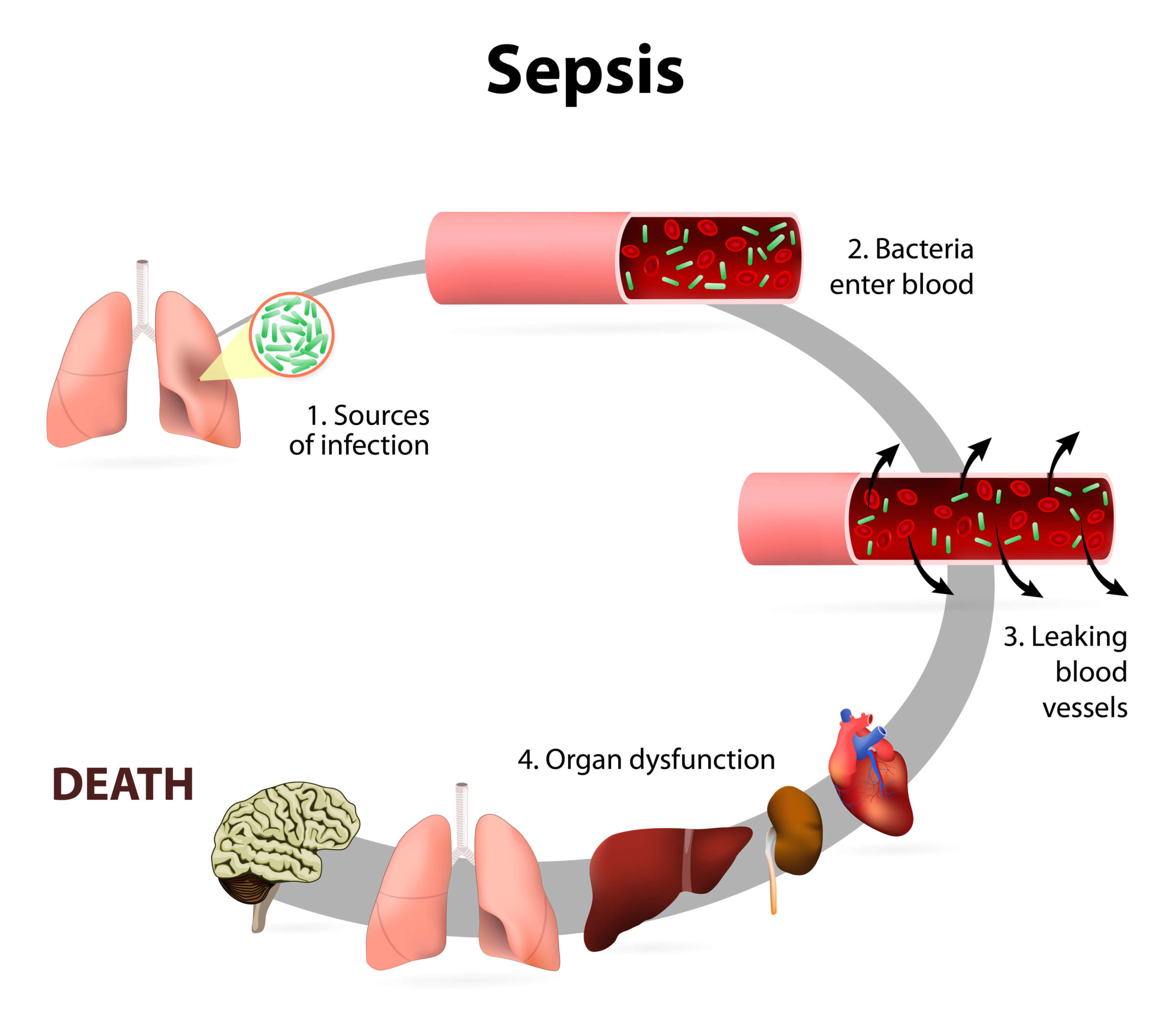Sepsis
Sepsis arises when the body responds to any infection damaging its tissues and organs. If it is not recognized early and managed properly, it can lead to septic shock, multiple organ failure and death.
Some of its symptoms are fever or low temperature, accelerated breathing, fast heart rate, confusion or edema. Bacteria, fungi, viruses, and parasites can trigger sepsis, being the former the most usual one.
Sepsis in numbers
Affects between 47 and 50 million people worldwide every year
Can cause 11 million deaths per year (one death every 2.8 seconds)
1 in 5 deaths worldwide is associated with sepsis
Increases 1.5% every year
80% of sepsis cases occur outside of a hospital
First cause of death in hospitals
(Data from Global Sepsis Alliance, May 2022)
Sepsis in Spain:
175 000 annual Sepsis cases ⇒ 17 000 deaths
(Data from SEMICYUC, May 2019)
Time is a critical factor:
Treatment should be available in the critical time window of 6 hours to avoid high morbidity and mortality.
Mortality increases an 8% for each hour of delay in the initiation of antibiotic therapy.
The World Health Organization adopted in 2017 a resolution recognizing sepsis as a Global Health Priority*
Infection diagnosis and clinical needs
Blood culture is to date the reference standard for the detection of microbial agents and it relies on bacterial and fungal growth.
Earliest results are generally obtained after 10-13 h. Some microorganism can take even days to be detected.
From all positive patient samples, the etiological agent is detected in 80-96% of the cases.
There is an urgent need for developing a fast and reliable microbial detection system.
(Cockerill F, Wilson J, Vetter E, Goodman K, Torgerson C, Harmsen W, et al. Optimal testing parameters for blood cultures. Clin Infec Dis. 2004;38:1724–30)
(World Health Organization. WHO Report on Sepsis. 2018-04-19 )



